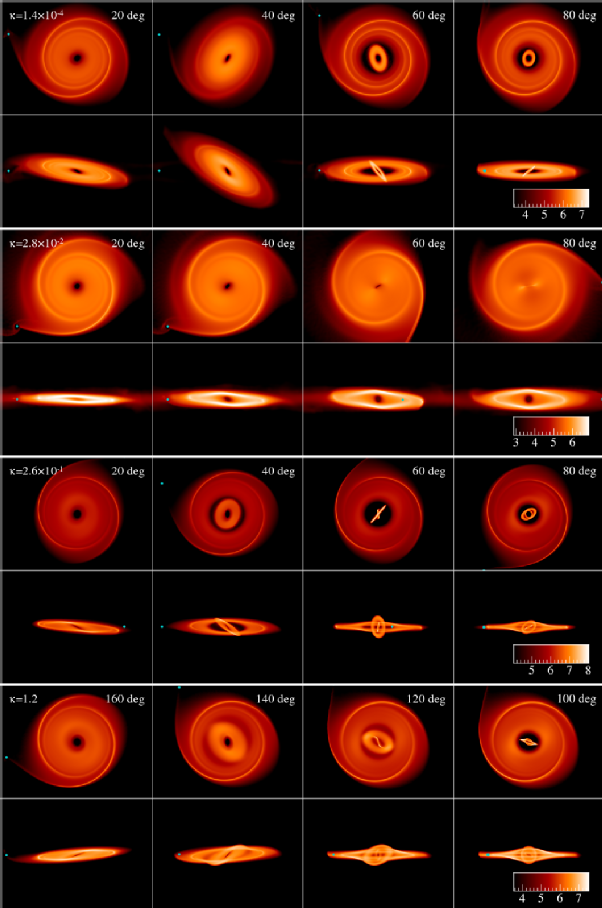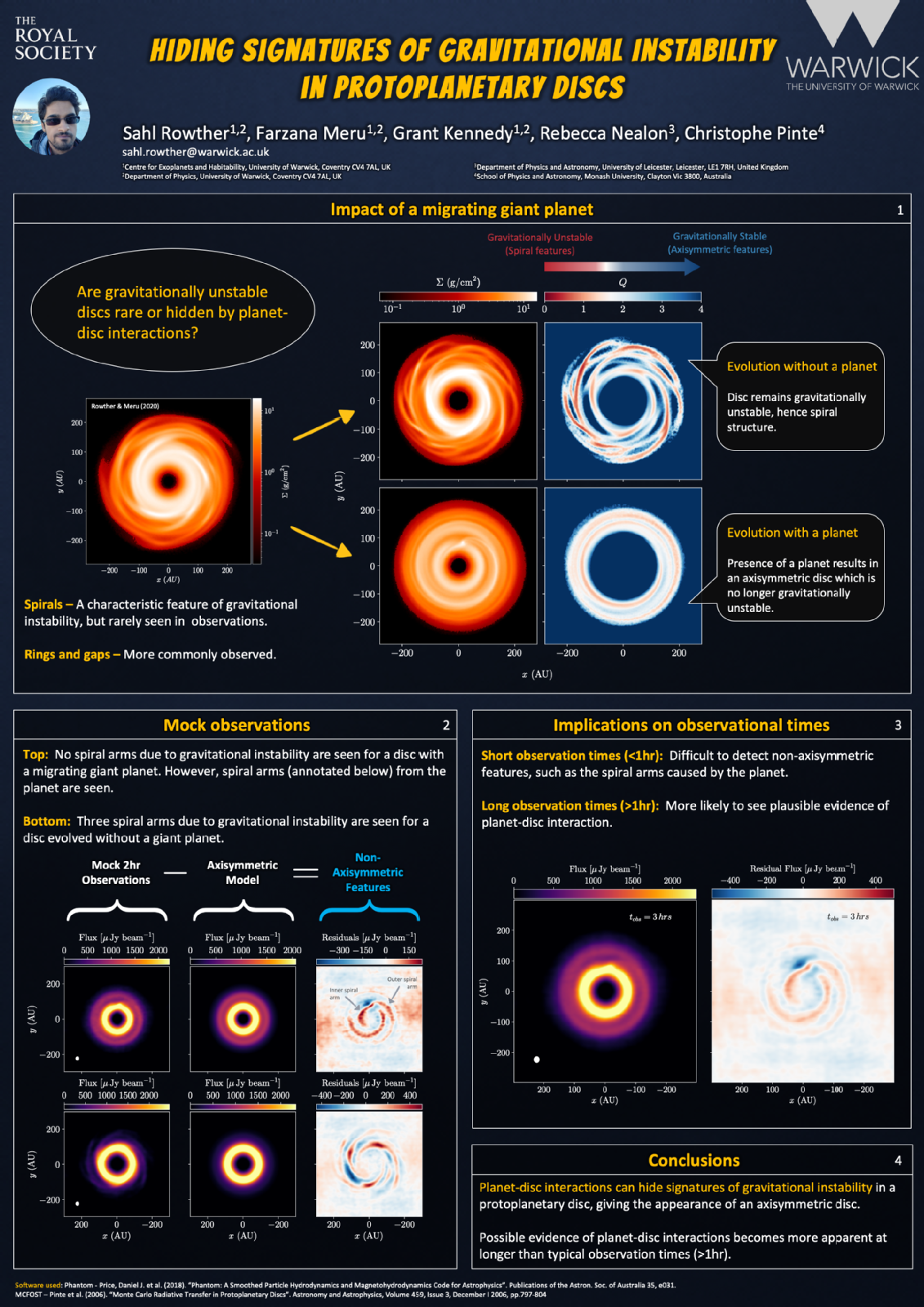Research News & Highlights
The Bardeen-Petterson effect in accreting supermassive black hole binaries: disc breaking and critical obliquity
Rebecca Nealon, Enrico Ragusa, Davide Gerosa, Giovanni Rosotti, Riccardo Barbieri

The inspiral of supermassive black hole (BH) binaries in a gas-rich environment is driven by the presence of an accretion disc and viscous interactions tend to align the spin of the BHs with the orbital angular momentum of the disc. Recent work introduced a new iterative approach to describe the alignment process and the resulting non-linear evolution of the surrounding warped accretion disc. Their model predicted that BH spins reach either full alignment or a 'critical obliquity' where solutions to the warp equations cease to exist. In this paper, we show that this critical region corresponds to the disc breaking phenomenon, where the disc is disrupted into two or more discrete sections. We use 3D hydrodynamical simulations to (i) recover the predictions of the semi-analytic model and (ii) unveil a richer phenomenology where the disc exhibits either unsuccessful, single and multiple breaks. We additionally identify hydrodynamic effects such as spiral arms that are able to stabilize the disc against breaking beyond criticality. Our results show that when disc breaking occurs, the ability of BHs and disc to align is compromised and in some cases even prevented as the binary inspirals.
Five Years After HL Tau
Sahl Rowther -- Are Gravitationally Unstable Protoplanetary Discs Rare?
The work covered in this talk is described in Rowther et al. 2020.
Rebecca Nealon -- Spirals, Shadows and Precession in HD 100453 Part 2
Part 1 can be viewed here.
Dimitri Veras - Constraining Planet Formation Around 6-8 Solar Mass Stars
The work covered in this talk is described in Veras et al. 2020.
Exoplanets III
Sahl Rowther -- Hiding Signatures of Gravitational Instability in Protoplanetary Discs
We carry out three-dimensional smoothed particle hydrodynamics simulations to show that a migrating giant planet strongly suppresses the spiral structure in self-gravitating disks. We present mock Atacama Large Millimeter/submillimeter Array (ALMA) continuum observations that show that in the absence of a planet, spiral arms due to gravitational instability are easily observed. Whereas in the presence of a giant planet, the spiral structures are suppressed by the migrating planet resulting in a largely axisymmetric disk with a ring and gap structure. Our modeling of the gas kinematics shows that the planet's presence could be inferred, for example, using optically thin 13C16O. Our results show that it is not necessary to limit the gas mass of disks by assuming high dust-to-gas mass ratios in order to explain a lack of spiral features that would otherwise be expected in high-mass disks.

